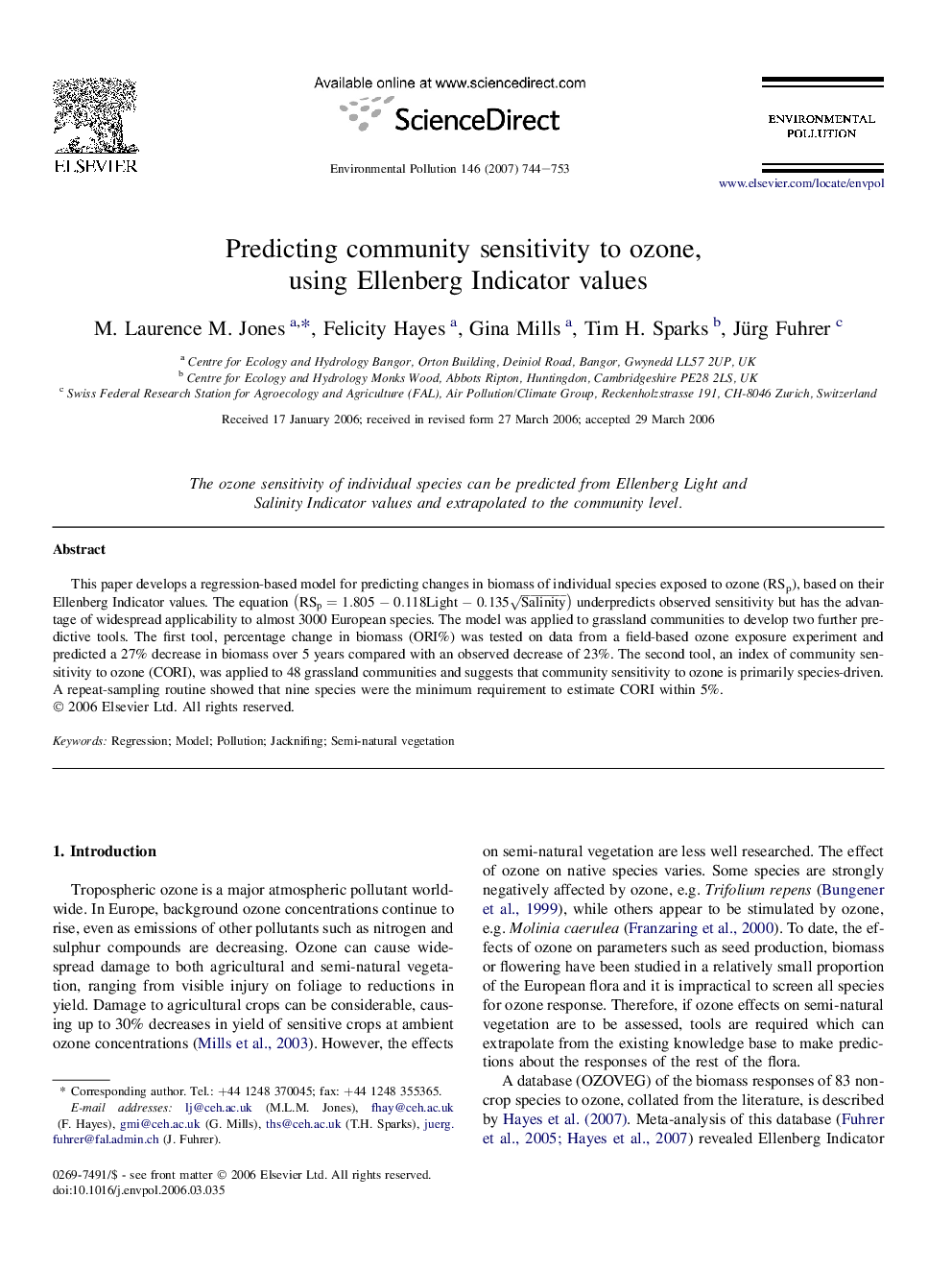| Article ID | Journal | Published Year | Pages | File Type |
|---|---|---|---|---|
| 4427296 | Environmental Pollution | 2007 | 10 Pages |
This paper develops a regression-based model for predicting changes in biomass of individual species exposed to ozone (RSp), based on their Ellenberg Indicator values. The equation (RSp=1.805−0.118Light−0.135Salinity) underpredicts observed sensitivity but has the advantage of widespread applicability to almost 3000 European species. The model was applied to grassland communities to develop two further predictive tools. The first tool, percentage change in biomass (ORI%) was tested on data from a field-based ozone exposure experiment and predicted a 27% decrease in biomass over 5 years compared with an observed decrease of 23%. The second tool, an index of community sensitivity to ozone (CORI), was applied to 48 grassland communities and suggests that community sensitivity to ozone is primarily species-driven. A repeat-sampling routine showed that nine species were the minimum requirement to estimate CORI within 5%.
